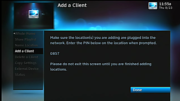At a recent training session for DIRECTV installers, I sat with a trainer who said that every installer should set up every receiver in “Native Mode.” I’m not sure I agree, but at the time I kept my thoughts to myself. I’ve had a chance to think about it and I thought you all would like to hear what I’ve come up with.
It’s never “one size fits all.”
If you’re a DIRECTV installer, you shouldn’t think in terms of “always.” Of course there are best practices like grounding and terminating. Those are about as close to “always” things as you’re going to get. But, when it comes to setting up the menus and interface, “always” isn’t the right way to go. You should make an attempt to understand your customer’s needs and set up the receiver the way that will work for them.
What is native mode anyway?
Native Mode is a special feature of DIRECTV’s HD and 4K products. It was originally designed to help people choose how to watch standard-definition programming on their HDTVs, and to deal with some of the limitations of those early TVs. I talked about it in 2014 and again fairly recently. Native mode passes content to your TV in the resolution it’s presented in. If it’s standard definition, that’s how it goes to your TV. If it’s 720p (the sort of “half-hi-def” solution used by ABC and Disney) it will send it that way.
You would use native mode if you think your TV will do a better job scaling from 480p (standard) or 720p to its own native panel resolution. TVs today have a resolution of 1920×1080 or 3840×2160 depending on whether or not they’re 4K-capable.
What’s the argument?
In most cases channel changes will be a little faster with native mode “off,” which is going to appeal to people especially if they came from cable where channel changing speed is generally faster. If you have a 4K TV, native mode should definitely improve quality for ABC, ESPN, and Disney channels because you’re not converting first to 1080i then to 4K. Also, a 4K TV can show 3 pixels for each pixel of 720p, which is an even multiple. A regular HDTV will always have a blurriness to 720p programming because 720 doesn’t go into 1080 evenly.
Here’s the myth
Here’s what that trainer didn’t get: If the TV were “really” outputting the resolution sent to it with native mode, it would be a totally different conversation. In the early days of HDTV, old tube TVs would really, actually, change resolutions so that if you asked for 1280×720 (aka 720p) that’s what you got. Today’s flat panels can’t do that trick. All they can do is simulate it with software, which inevitably means some added blurriness.
So you have to ask yourself…
What device is going to do a better job converting from a lower-quality signal to 1080p or 4K? If you think your TV will, then turn native on. Ten years ago, most people would expect that their $3,000 TV would do a better job scaling up that picture than a $200 DVR.
Today’s TVs, though, are a lot less expensive and not always as well made. DIRECTV receivers use quality video processors from Broadcom and others and their scaling is top-notch. I can’t tell you what every different TV maker uses and I will say that the scaling processor is one of those things that manufacturers will “cheap out” on because people can’t tell the difference in the showroom. You just can’t automatically assume that the TV will do a better job scaling than the DIRECTV receiver.
You also have to ask yourself if you (or your customer) cares enough about scaling to deal with longer channel changes. DIRECTV’s clients already “force a mode change” so they can enforce copy protection. This can lead to a black screen for 2 or 3 seconds every time a customer goes in or out of a menu, starts or ends a recording, or changes a channel. Does your customer really want to wait longer than that for “your” version of better quality?
My own personal choice
Personally I have native “off” on my HDTVs and “on” for my 4K TV. I really do see a difference with those Disney/ABC/ESPN channels on my 4K TV, where the picture looks a lot sharper that way. On my HDTVs, I personally find DIRECTV’s scaler to be better than the internal one. That’s my personal choice.
The moral of the story
Every TV is different. Every customer is different. Their idea of quality and value is different from yours. Ask them what looks better. If two choices look the same, then choose the one that works better. If they truly don’t care, set it up as simply as possible.





